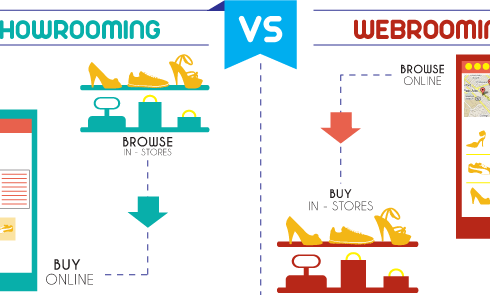Inc42 Daily Brief
Stay Ahead With Daily News & Analysis on India’s Tech & Startup Economy
Abhishek Dadoo
He’s the Founder & CEO at Shoffr.com, a mobile shopping assistant to discover brands in your vicinity. He has worked with Ericsson Telecommunications, Altman Vilandrie & Co., and PricewaterhouseCoopers in the United States and Singapore. He is trained in Mathematics & Computer Science and holds a MBA from INSEAD.
Omni-channel retail has been a buzz word in the retail circuits off-late. With the advent of ecommerce, retailers are more cognizant about providing a seamless customer experience across the offline and online worlds. When customers are showrooming, they examine the merchandize at your brick and mortar store, but ultimately shop online seeking a lower price. Reverse-showrooming is a trend where customers discover and research the brand on their mobile apps before walking into the brick and mortar store to make an informed purchase.
As a marketer why should you care? After all a-sale-is-a-sale, doesn’t matter where it happens. Right? Wrong. If we look deeper we can analyse the benefits and drawbacks of both showrooming and reverse-showrooming. This feature will analyse the qualitative and quantitative aspects of both these trends.
A showroomer is not hard to identify. Your store managers will tell you they can spot one from a mile away. Say the showroomer is done inspecting the merchandize at your store and jumps on her smartphone as soon as she leaves your store. Do you think she is going to Yourstore.com or is she going to Flipkart.com / Amazon.in?
Chances are your store has lost any further opportunity to convert this in-store interaction into a sale on your online store. Even worse, the showroomer hopped on to an ecommerce aggregator portal and found your competition selling a similar product. In this case your brand has not only given up on a customer relationship management opportunity, but also lost the top-line. You just spent an insane amount of money to operate a brick and mortar store and the customer opportunity was swiftly cannibalized by your competitor. Even if a customer does end up buying your product from the ecommerce portal, you are paying a significant commission on the revenues generated by the ecommerce portal. So if your brand is in the business of operating brick and mortar stores, should you sell the same product on ecommerce aggregator portals? The obvious answer is no. In the context of showrooming then, it is imperative that brands try to focus customers’ attention on brand owned online assets and not lose the customer to third party online assets.
The value proposition of reverse-showrooming/webrooming is drastically different for retailers who are in the brick and mortar space. When a customer is researching online about products and services available offline, their intent is very clear – they have confirmed that they are not interested in ecommerce deal seeking behaviour. The cost of maintaining a web portal is marginal when compared to the costs of operating a store. At a minimum brands should maintain top quality websites and social media pages so that customers have the desired information at their fingertips. However, from the customers’ point of view they would like detailed information from all brands under one roof so that they can make an educated choice before walking into your store. For a minimal fee, brands can tie up with webrooming affiliates specializing in driving footfall to offline stores. Since web technology is the core business for these affiliates, they tend to do a good job in pulling together store-level and brand level information in one place such that the customer’s discovery and research process is simplified.
There are distinct advantages to webrooming for a brick and mortar store
- Retain Customer Relationship Management (CRM) opportunity
- Keep the revenues
- Costs to own or rent from 3rd party digital platforms is low
- Customer touch & feel factor and gratification is retained
There is a simple saying: A bird in the hand is worth two in the bush. This is exactly the case with webrooming and showrooming. In the case of webrooming, when a customer walks into your store she is confident about her purchase criteria and your store already meets it. To instantly gratify this webroomer, all you need to do is provide excellent service at the store. This is also a golden opportunity to enrol the webroomer in your CRM program.
In the case of showrooming, when a customer lurks at your store, they are still in decision making mode and impressionable. Hence the risk of losing this customer to third part e-commerce portals or your competition is very high. Ultimately, as a brand marketing manager you can’t stop cannibalisation by virtue of showrooming. You can only influence the customer to the best of your store manager’s abilities.
Note: We at Inc42 take our ethics very seriously. More information about it can be found here.


